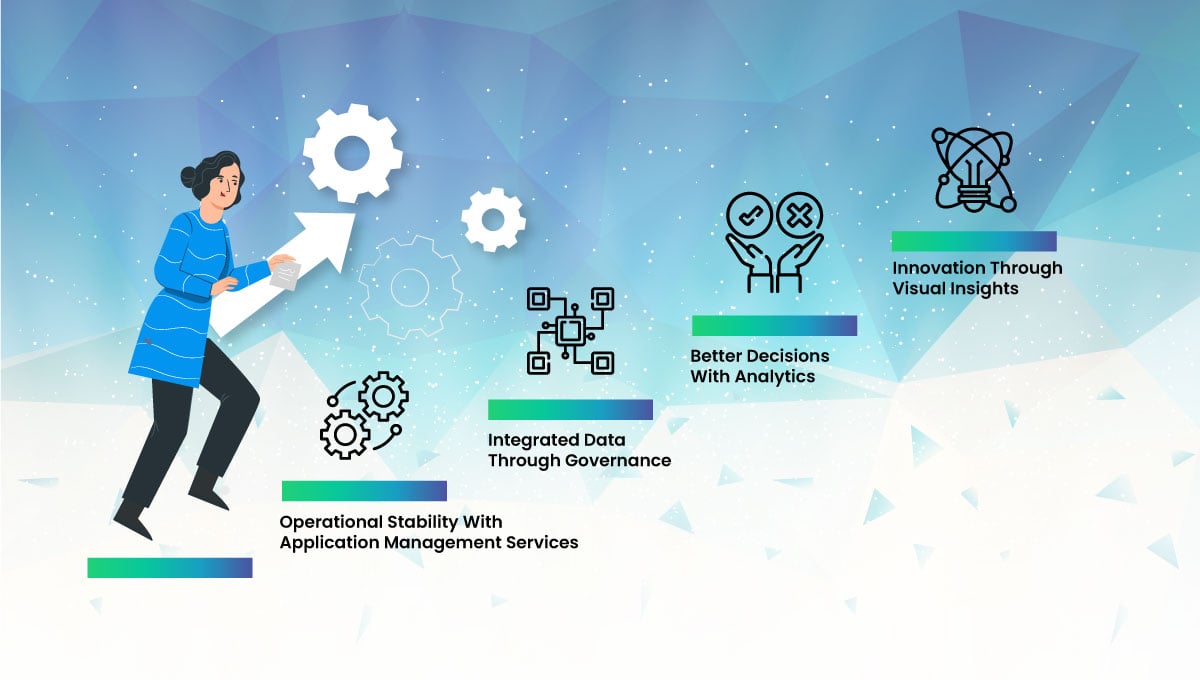
Whether you are advanced reporting veterans in your HR platform or just getting started, this article is for you.
But before we start a discussion, let’s create a common understanding of what most vendors call Advanced Reporting.
It means you’ve grown beyond merely using the reports provided by your HCM vendor to where:
- you create your own reports and dashboards on demand, and
- managers and leaders depend on those reports to make good decisions throughout the business,
- which means you’ve created a data-driven culture informed by data analysis.
Where do you fit in this progression?
-1.jpg?width=656&height=219&name=table%20(3)-1.jpg)
Making reporting work for you
If you take your time and create a firm foundation built on sound data management and governance, it won’t be long until you’re producing reports that drive decisions.
Gone are the days when you could only answer questions like “How did we do last quarter, last year, last week?”
Using past performance to inform hunches on future outcomes is a thing of the past. Your capacity to analyze what happened to identify trends and insights moves your business up the value chain to the first step in analytics proficiency.
Here, customized templates issue tailored reports that speak directly to your business’s needs and challenges. You use various data sources to create reporting in greater detail. Automated reporting and analyses populate dashboards that enable you to identify trends and anomalies visually.
This first level of data analysis enables forecasting for the business based on a combination of information and educated deductions.
-1.jpg?width=1200&height=658&name=BLOG-COVER-IMAGE%20(1)-1.jpg)
Where You Are Going: Advanced Analytics
Advanced Analytics is the next step in your journey, including descriptive and diagnostic analytics.
Diagnostic analytics answers the question, “Why did that happen?” using multiple statistical techniques.
You can use external or internal data to conduct a root cause analysis of the trends and patterns. It’s a deep dive into data to search for valuable insights informing business decisions.
So, we established where you are and your intended destination on the analytics journey. But how do you get there?
Is it something you can achieve incrementally over time? Do you need more investment, expertise, and experience? You are paving the way now for the next step.
The Next Step in Data Reliance: Bridging the Gap between Advanced Reporting and Analytics
If you're looking to take your business to the next stage of data reliance, you might be wondering what it will take to bridge the gap between advanced reporting and analytics. But here's the good news - you already have momentum! You've already gained buy-in and support from leadership and laid the foundation for a data-driven culture.
So what's next? Developing your advanced reporting will help you close four gaps on the way to analytics: the investment gap, the skills gap, the culture gap, and the data gap.
The Investment Gap
To bridge the investment gap, you'll need to invest in tools and resources to make analytics possible, but don't worry - it doesn't have to break the bank. An incremental approach is best, with cloud-based SaaS being the preferred and more economical option. Start small by identifying one problem your business needs to solve, and gather the resources and data needed to tackle that project. With each success, you'll build momentum and confidence in the value analytics bring to the decision-making process, which will justify more extensive efforts.
The Skills Gap
We recommend regular training in people analytics for everyone who uses data. By introducing intuitive tools and training and embedding analytics into business tools and apps, you'll help to democratize data, empower your team, and develop a data-driven culture.
The Culture Gap
To build positive, trusting relationships with data, it's essential to create an environment where data is seen as a friend and a tool that will make everyone better at their jobs. This requires a top-down approach, where leadership sets the tone and emphasizes the reliance on data by explaining how it's used in the decision-making process.
The Data Gap
Advanced reporting lets your workforce get their hands wet in the data fountain. With people analytics, you'll need higher volume and data quality. That means having a data analyst on your team whose job is to wrangle the data and create reports and dashboards for your leaders. You'll also need data integration to provide users with a unified data view and a data cleaning process to organize and safeguard accuracy.
Overall, bridging the gap between advanced reporting and analytics isn’t a giant leap—it's a process that requires investment, skill-building, culture development, and attention to data quality. But by taking a small, incremental approach and building momentum with each success, you can get there sooner than you might think.
Remember your purpose.
Moving from operational to advanced reporting, you move from reactive to proactive decisions. People analytics take it further by adopting a future-focused mindset that facilitates actionable insights.
The goal of analytics is to inform decision-making that can lead to better business outcomes. You increase decision accuracy, speed, and viability by mastering advanced reporting.
Phenom eCloud is a comprehensive technology solutions provider committed to empowering businesses to overcome challenges, enhance their workforce capabilities, and achieve superior outcome

-1.jpg?width=1200&height=310&name=cta%20(3)-1.jpg)



Leave a Comment